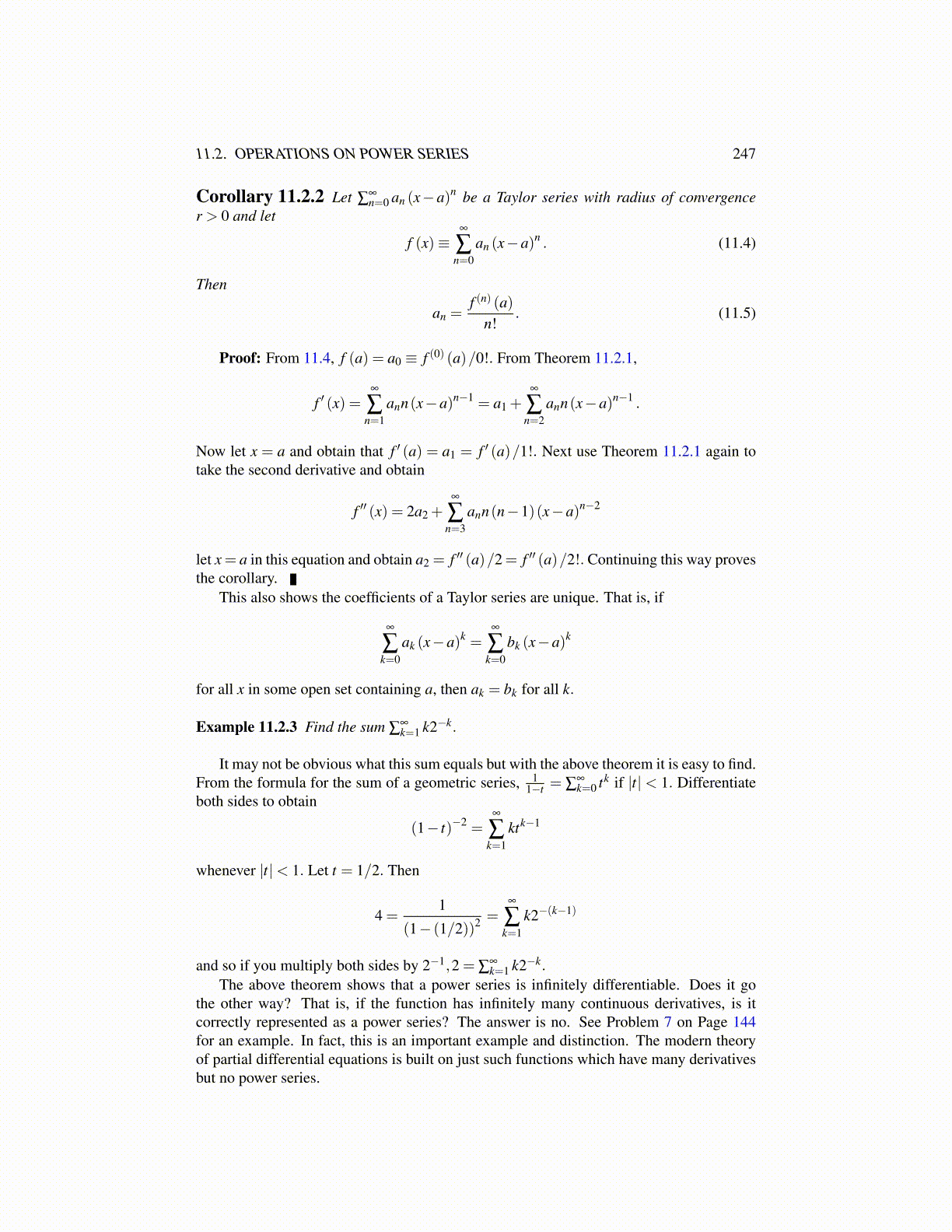
11.2. OPERATIONS ON POWER SERIES 247
Corollary 11.2.2 Let ∑∞n=0 an (x−a)n be a Taylor series with radius of convergence
r > 0 and let
f (x)≡∞
∑n=0
an (x−a)n . (11.4)
Then
an =f (n) (a)
n!. (11.5)
Proof: From 11.4, f (a) = a0 ≡ f (0) (a)/0!. From Theorem 11.2.1,
f ′ (x) =∞
∑n=1
ann(x−a)n−1 = a1 +∞
∑n=2
ann(x−a)n−1 .
Now let x = a and obtain that f ′ (a) = a1 = f ′ (a)/1!. Next use Theorem 11.2.1 again totake the second derivative and obtain
f ′′ (x) = 2a2 +∞
∑n=3
ann(n−1)(x−a)n−2
let x = a in this equation and obtain a2 = f ′′ (a)/2= f ′′ (a)/2!. Continuing this way provesthe corollary.
This also shows the coefficients of a Taylor series are unique. That is, if
∞
∑k=0
ak (x−a)k =∞
∑k=0
bk (x−a)k
for all x in some open set containing a, then ak = bk for all k.
Example 11.2.3 Find the sum ∑∞k=1 k2−k.
It may not be obvious what this sum equals but with the above theorem it is easy to find.From the formula for the sum of a geometric series, 1
1−t = ∑∞k=0 tk if |t| < 1. Differentiate
both sides to obtain
(1− t)−2 =∞
∑k=1
ktk−1
whenever |t|< 1. Let t = 1/2. Then
4 =1
(1− (1/2))2 =∞
∑k=1
k2−(k−1)
and so if you multiply both sides by 2−1,2 = ∑∞k=1 k2−k.
The above theorem shows that a power series is infinitely differentiable. Does it gothe other way? That is, if the function has infinitely many continuous derivatives, is itcorrectly represented as a power series? The answer is no. See Problem 7 on Page 152for an example. In fact, this is an important example and distinction. The modern theoryof partial differential equations is built on just such functions which have many derivativesbut no power series.